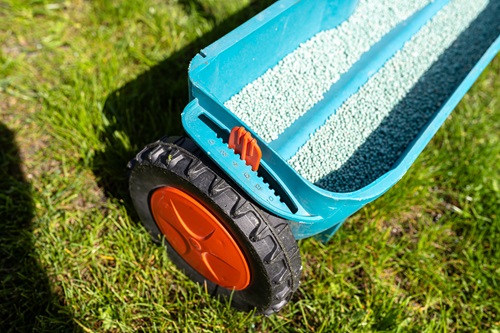Mulch can be fertilized on top. However, the success of fertilizing depends on how quickly it decomposes and the type of mulch. You can fertilize the mulch with fast-decomposing mulches like seed hulls and grass clippings before you apply it again each year. This is when most of the mulching from last year will have been removed.
To ensure that organic mulch such as bark and wood mulch is not decomposing too quickly, it’s important to remove mulch from your garden soil before you apply fertilizer.
Granular fertilizers should be used in as close to the ground as possible. Granular fertilizers are most effective when they come into contact with moist soil. This is where they can break down and release their nutrients.
When fertilizing mulch tops, liquid fertilizers are the best option. They will penetrate the mulch and reach the soil below.
Fertilizing and Mulching
When fertilizer is applied to mulch, timing is crucial. You will need to reapply mulch every spring if you are using fast-decomposing mulches like straw, grass clippings or cocoa hulls. It is a good idea to fertilize before you add new mulch. This is because most of the mulch will have been broken down by this time. It is easy to fertilize and then add mulch.
It may be harder to fertilize mulch if it is slow-decomposing, like bark mulch or nuts. You need to choose a liquid fertilizer that penetrates mulch best and helps plants grow.
Apply granular fertilizer or liquid fertilizer to gardens with less than 1/2 inch of mulch left. Then add new mulch. To discourage future weed growth, add at least 2-3 inches of mulch.
Avoid granular fertilizer in gardens or areas where there is a lot of mulch (greater that 1/2 inch). To ensure that you reach all tree and plant roots, use liquid fertilizer.
Fertilizing through Wood Chips
For your lawn care, it is best to remove mulch from plants before fertilizing them with wood chips. This will give you the best results and the most fertilizer for your plants.
It may not always be possible to remove mulch from large gardens to apply fertilizer. The following is a list of things to remember if you have to fertilize with wood chips:
Avoid using granular fertilizer for your landscaping Conway SC. It can get stuck in mulch and won’t break down properly.
Add a liquid fertilizer to the top of the wood chips. After fertilizing, water to soak the fertilizer in the soil.
Make sure to read the instructions for your liquid fertilizer. You may be advised to increase the fertilizer in areas that are mulched.
Mulch Fertilizes the Ground and Soil
Mulch gradually fertilizes the ground by releasing their nutrients. Mulch is a thin layer that gradually turns into compost.
Mulchs can be broken down over time and added nutrients to the soil. This is usually a very good thing. Mulchs that have chemicals or acidic mulches, such as those made from commercial wood mulches, can potentially increase these properties. Be careful when selecting your mulch.
Mulch can increase Nitrogen in the soil?
Mulch does not reduce nitrogen in soil, so don’t believe it. This myth is totally false. This is completely false.
Mulch myths claim that mulches steal nitrogen. This myth is still commonly believed by gardeners who want to use mulch to encourage them to fertilize with more fertilizer. Mulch won’t rob nutrients from your soil. Mulch can absorb some liquid fertilizer, so it is best to remove mulch from your soil before fertilizing.
Is it possible to add compost to Mulch?
It is best to add compost or compost tea directly to your soil. This will give you the most effective and fastest results. There are certain cases when you can add compost to mulch.
For gardens that have less than 1/2 inch of mulch, you can add a layer of compost to the soil, and then cover it with new mulch.
Mulch that is more than 1/2 inch thick in gardens should be removed to make room for compost.
Applying compost on top of a thick mulch layer may not penetrate the soil to feed your plants. It can also become a breeding ground of weeds if left untreated.
Fertilizing on Top of Mulch
Apply fertilizer to mulch when it is less than 1/2 inch thick. Mulch-covered areas should be raked away so that your fertilizer can be applied directly to the soil.
Apply fertilizer to mulch. Water thoroughly after fertilizing. Granular fertilizers work better on top of mulch than those that are liquid.
Call Conner’s Lawn Care Service if you need help in taking care of your lawn.
Conner’s Lawn Care Service
Myrtle Beach, SC
843-504-4901
http://connerslawncare.com/


